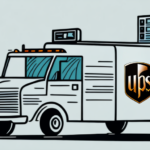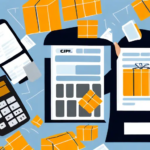Understanding the UPS Chargeback Standard for Shipment
If your business relies on shipping products with UPS, it's essential to understand the concept of chargebacks. UPS chargebacks refer to fees levied against shipments for various reasons, such as incorrect package weight or dimensions, delivery to the wrong address, or inadequate packaging. In this article, we will delve into the different types of UPS chargebacks, their impact on your business, and strategies to avoid them.
The Importance of Understanding UPS Chargebacks
UPS chargebacks can significantly affect your business's profitability. Frequent chargeback fees can erode your bottom line and strain your relationship with UPS. Moreover, chargebacks may signal underlying issues in your shipping process that need attention.
Additionally, a history of frequent chargebacks with UPS can tarnish your reputation with other carriers. Other shipping providers may view you as a high-risk client, potentially leading to higher rates or reluctance to partner with you. Therefore, comprehending and mitigating chargebacks not only enhances your relationship with UPS but also strengthens your overall shipping strategy.
What is a UPS Chargeback?
A UPS chargeback is a fee imposed by UPS when a shipment fails to meet specific requirements. Chargebacks can arise for various reasons, including incorrect weight or dimensions, delivery to an incorrect address, insufficient packaging, or delays and damages during transit. These fees can accumulate rapidly, especially if multiple shipments do not comply with UPS's standards.
Beyond financial implications, UPS chargebacks can harm your business’s reputation. Consistently failing to meet UPS's requirements may result in delayed or lost shipments, leading to dissatisfied customers and negative reviews. To avoid chargebacks and maintain a positive reputation, it is crucial to adhere strictly to UPS's guidelines for packaging, labeling, and shipping practices.
Common Reasons for UPS Chargebacks
Several factors can trigger UPS chargebacks. Common reasons include:
- Incorrect weight or dimensions of the package
- Improper packaging
- Delivery to the wrong address
- Incorrect labeling of the package
- Missing delivery windows
Understanding these causes is the first step toward preventing chargebacks.
Another frequent cause is the failure to provide accurate and complete shipment information. This includes missing or incorrect recipient details, incomplete or inaccurate customs documentation for international shipments, or failure to disclose hazardous materials within the package.
Additionally, UPS may impose fees for shipments requiring special handling, such as oversized items, fragile goods, or temperature-controlled transportation. Proper identification and labeling of these shipments are essential to avoid unexpected charges.
How to Avoid UPS Chargebacks
Implementing the following steps can help minimize the risk of incurring UPS chargeback fees:
- Accurately weigh and measure packages
- Use appropriate packaging materials
- Label packages correctly
- Ensure accurate address information
- Adhere to delivery windows
By following these practices, you can significantly reduce the likelihood of chargebacks and the associated costs.
Another crucial measure is to accurately declare the value of your shipments. Properly reporting the value of the contents helps prevent discrepancies or disputes with UPS. Additionally, utilizing UPS's automated shipping tools can enhance accuracy and reduce errors in the shipping process. These precautions further decrease the risk of chargebacks and protect your business from unnecessary expenses.
Analyzing Your Shipping Process for Potential Chargebacks
Beyond preventive measures, regularly analyzing your shipping process is vital to identify areas susceptible to chargebacks. Reviewing your shipping data can help you identify patterns and pinpoint where errors are occurring, allowing you to make informed adjustments.
One critical area is the accuracy of your product descriptions. Unclear or inaccurate descriptions can lead to customer disputes or returns, resulting in chargebacks. Ensure that your product descriptions are detailed and precise to avoid confusion or misunderstandings.
Another essential factor is the packaging and handling of your products. Inadequate packaging or mishandling during shipping can result in damaged or incorrectly described items, leading to chargebacks. Ensure that your packaging is sturdy and that your staff is trained in proper handling and shipping procedures to minimize these risks.
Understanding the Different Types of UPS Chargebacks
UPS imposes various types of chargebacks, each with specific criteria. Some of the most common chargebacks include:
- Address Correction Charge
- Large Package Surcharge
- Additional Handling Charge
- Delivery Area Surcharge
- Fuel Surcharge
Understanding these different chargebacks and their triggering criteria is essential for avoiding them.
The Address Correction Charge occurs when the shipper provides an incorrect or incomplete address. This charge can be avoided by double-checking addresses before shipping and utilizing address validation tools.
The Large Package Surcharge applies to packages exceeding specific size or weight limits. To avoid this charge, accurately measure and weigh your packages before shipping and consider using smaller packaging when possible.
What Happens After a UPS Chargeback?
If your shipment incurs a chargeback fee, UPS will issue an invoice for the amount owed. It's crucial to review the invoice meticulously to ensure the chargeback is legitimate. If you believe the chargeback was issued erroneously, you can dispute it with UPS.
After receiving the invoice, you will have a designated period to pay the chargeback fee. Failing to pay within the specified timeframe may result in UPS taking legal action to recover the owed amount. Prompt payment of chargeback fees is essential to avoid legal complications.
Frequent chargebacks may cause UPS to classify your account as high-risk, potentially leading to higher fees or even termination of your account. To prevent this, implement measures to reduce the occurrence of chargebacks, such as ensuring accurate labeling and packaging of your shipments.
The Financial Impact of UPS Chargebacks on Your Business
Chargeback fees can accumulate swiftly, significantly impacting your business's profitability. The frequency and magnitude of these fees must be accounted for in your shipping budget, and proactive steps should be taken to avoid them.
One effective strategy to avoid chargebacks is ensuring proper labeling and packaging. UPS has stringent guidelines for labeling and packaging, and non-compliance can result in chargebacks. Use the correct label type and place labels in the appropriate location. Additionally, ensure that your packages are adequately packaged to prevent damage during transit.
Providing accurate and detailed product information is another way to avoid chargebacks. If customers receive products that differ from their descriptions on your website, they may file chargebacks. Ensure that product descriptions are accurate and up-to-date, and provide clear images to represent your products effectively. Address customer inquiries with detailed and precise information to prevent any confusion or misunderstandings.
Best Practices for Managing and Reducing UPS Chargebacks
To minimize the impact of chargebacks on your business, adopt a proactive approach to manage them. Key best practices include:
- Regularly review shipping data to identify potential issues
- Train employees on proper labeling and packaging procedures
- Communicate with customers to ensure accurate delivery information
- Pay invoices promptly to avoid additional fees
Additionally, closely monitor your inventory levels to ensure sufficient stock for timely order fulfillment. This helps prevent chargebacks related to late or missed deliveries.
Regularly reviewing and negotiating your shipping rates with UPS can also help ensure you receive the best possible rates. This strategy can reduce overall shipping costs and minimize the financial impact of chargebacks on your business.
Tips for Negotiating with UPS Overcharge Claims
If you believe a chargeback was incorrectly issued, it's important to dispute it with UPS. Here are some tips for negotiating overcharge claims:
- Provide detailed documentation to support your claim
- Be persistent and follow up regularly
- Consider enlisting the help of an external consultant or attorney if necessary
Understanding the terms and conditions of your UPS contract and any applicable laws and regulations can strengthen your case when disputing overcharge claims. Building a good relationship with your UPS representative can also provide valuable insights and assistance in resolving disputes. Maintain professionalism and courtesy throughout the negotiation process to facilitate a positive outcome.
Case Studies: Real-Life Examples of Successful Management of UPS Chargebacks
Learning from other businesses that have successfully managed their UPS chargebacks can provide valuable insights into effective strategies and best practices.
For instance, one case study demonstrated how a small e-commerce business reduced their UPS chargebacks by 50% by implementing a new shipping software that automatically verified addresses and ensured accurate package weights. Another case study highlighted the importance of clear communication with customers regarding shipping expectations and potential fees, which helped reduce chargebacks related to missed delivery deadlines.
By understanding the UPS chargeback standard for shipment, you can make informed decisions about your shipping processes and take proactive steps to avoid fees. Implementing preventive measures, analyzing your shipping data, and effectively managing chargeback disputes can help minimize the financial impact on your business.
For more detailed strategies and tools to manage your shipping processes effectively, visit ShipScience.






















